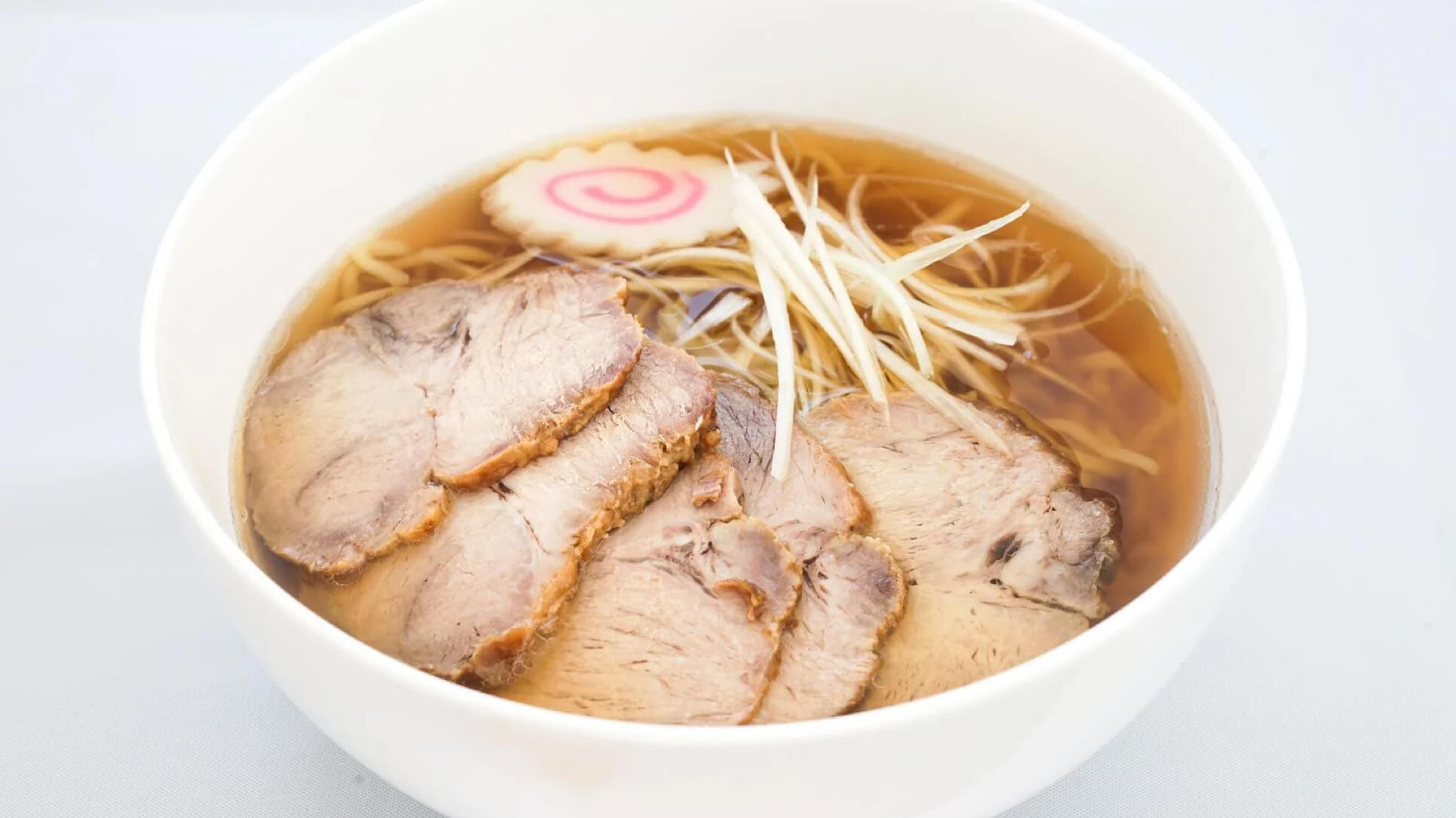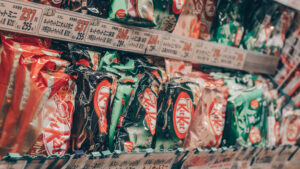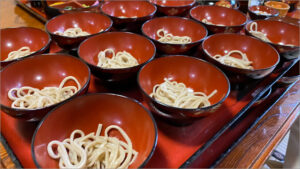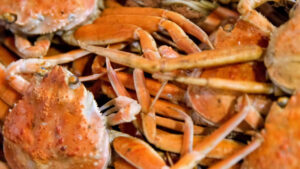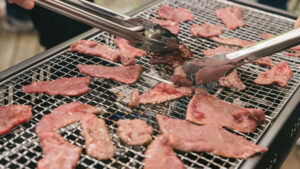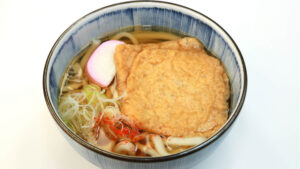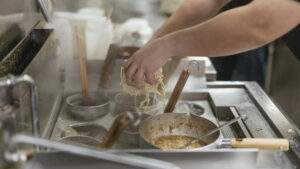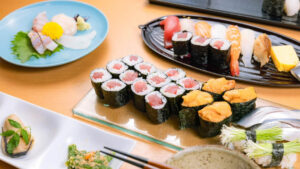Ramen is the one Japanese dish you’re almost guaranteed to encounter while traveling in Japan. Across the country, countless ramen shops serve bowls with distinct flavors and styles that vary by region. For first-time visitors, though, things like ticket vending machines and unique ordering phrases can be confusing.
This article explains Japan’s ramen culture, regional differences, and the key terms and etiquette that will help you order with confidence.
Contents
Discover Japan’s Ramen Culture
Ramen: A Beloved National Dish
Ramen is one of Japan’s most iconic and beloved national dishes. There are tens of thousands of ramen shops nationwide, ranging from small local eateries to famous chain restaurants and even Michelin-starred establishments. In Japan, ramen is a go-to option for both lunch and dinner, enjoyed by a wide range of people from students to business professionals.
Originally inspired by Chinese noodle dishes, ramen has evolved uniquely in Japan, offering endless combinations of soup, noodles, and toppings. With its wide variety of flavors and customization options, each visit to a ramen shop can bring a new discovery.
Regional Differences in Ramen
One of the most fascinating aspects of Japan’s ramen culture is the distinct character found in each region.
- Sapporo Ramen: Rich miso (miso) soup with thick curly noodles, often topped with butter and corn.
- Hakata Ramen: Creamy white tonkotsu (pork bone) broth with ultra-thin straight noodles. The culture of kaedama (extra noodles) originates here.
- Kitakata Ramen: Light shōyu (soy sauce) broth with flat, wide noodles.
- Tokyo Ramen: Chicken-based shōyu broth served with thin straight noodles.
Sampling different regional styles while traveling in Japan is one of the most enjoyable ways to experience the country’s culinary diversity.
Ramen Shop Styles Popular with Foreign Visitors
Foreign travelers often enjoy the following types of ramen shops:
- Ticket vending system: Order by purchasing a meal ticket from a vending machine at the entrance. Photo buttons make it easy even without knowing the language.
- Counter-only shops: Designed for solo diners, these shops allow for a quick meal and are popular with ramen enthusiasts.
- Famous chain shops: Brands like Ichiran and Ippūdō offer English menus and staff who can assist in foreign languages.
- Regional specialty shops: These shops serve local ramen specialties, allowing you to taste the flavors unique to each area.
With such a variety of shop styles and atmospheres, finding one that suits your preferences and travel style is part of the fun.
Common Ordering Terms at Ramen Shops
“Nami,” “Ōmori,” and “Kaedama”
At ramen shops, you can often specify the amount of noodles you’d like.
- Nami (regular size): The standard amount of noodles. If you don’t specify, this size is usually served.
- Ōmori (large size): A larger serving of noodles. More filling, but often comes with an extra charge.
- Kaedama (extra noodles): Ordering just noodles to add to your remaining soup after finishing the first serving. This is a well-known custom in Hakata ramen.
Travelers should time their kaedama order carefully — asking just before finishing your noodles ensures they won’t get soggy.
Customization Options: “Aji Koime,” “Abura Ōme,” “Men Katame”
Many ramen shops allow you to customize your soup and noodles to your preference.
- Aji koime (stronger flavor): Increases the soup’s seasoning, often with more soy sauce or miso tare, resulting in a saltier taste.
- Aji usume (lighter flavor): Reduces the soup’s seasoning for a lighter taste, good for those who prefer a milder flavor.
- Abura ōme (extra oil): Adds more oil to the soup, giving it a richer taste and helping it stay hotter longer.
- Men katame (firm noodles): Boils noodles for a shorter time, leaving them with a firmer texture.
- Men yawarakame (soft noodles): Boils noodles longer for a softer texture.
These are usually communicated verbally, but pointing at the English menu works just as well if available.
Common Phrases You May Hear When Ordering
After ordering or upon sitting down, staff may ask you the following questions:
- “Men no katasa wa dō shimasu ka?” (How firm would you like your noodles?)
→ Reply with: katame (firm), futsū (normal), or yawarakame (soft). - “Aji no kosa wa dō shimasu ka?” (How strong would you like the flavor?)
→ Reply with: koime (strong), futsū (normal), or usume (light). - “Abura no ryō wa dō shimasu ka?” (How much oil would you like?)
→ Reply with: ōme (more), futsū (normal), or sukuname (less).
Knowing these exchanges in advance will help you order smoothly and enjoy a bowl tailored perfectly to your taste.
Types of Ramen Broth and Their Flavors
Shōyu Ramen (Soy Sauce Ramen)
Shōyu ramen is one of the most popular ramen styles in Japan. Its broth is made by adding soy sauce seasoning to a stock prepared from chicken bones, pork bones, or other ingredients, creating a fragrant, deep flavor. The soup is slightly brown in color and ranges from light to rich in taste. Widely enjoyed in Tokyo and beyond, it is considered a standard bowl that’s easy to enjoy in any region.
Miso Ramen
Miso ramen originated in Sapporo, Hokkaido, and is known for its rich, hearty broth. The distinctive umami and aroma of miso make it especially popular in the cold winter months. Toppings such as butter, corn, and bean sprouts pair perfectly with the soup, which often has a slightly orange hue. Thick, curly noodles are commonly used, and despite its richness, the sweetness of the vegetables adds balance.
Shio Ramen (Salt Ramen)
Shio ramen features a clear, golden broth. It’s made with a salt-based seasoning combined with chicken or seafood stock, resulting in a light yet flavorful soup. With less fat and a clean, refreshing taste, it’s ideal for ramen beginners or those who prefer a lighter bowl. Common toppings include green onions, menma (seasoned bamboo shoots), and chāshū (braised pork), keeping the presentation simple.
Tonkotsu Ramen (Pork Bone Ramen)
Tonkotsu ramen is beloved in Kyushu, particularly in Fukuoka’s Hakata area. The broth is made by simmering pork bones for many hours until it becomes creamy white, resulting in a rich, velvety flavor. Ultra-thin straight noodles are typically served, and the famous kaedama (extra noodles) system allows diners to add more noodles to their remaining broth. Garlic, pickled red ginger, and spicy mustard greens are often added for extra flavor.
Toppings and Ingredients
Chāshū, Menma, Negi, and Nori
These four toppings are staples you’ll often find in a bowl of ramen:
- Chāshū (braised pork): Slices of pork simmered in a savory-sweet sauce. Some shops serve melt-in-your-mouth fatty pork, while others offer fragrant grilled chāshū.
- Menma (bamboo shoots): Fermented bamboo shoots seasoned for flavor. Their crunchy texture and unique taste pair perfectly with ramen soup.
- Negi (green onions): A garnish that enhances the aroma of the soup. Green onions add freshness, while white onions bring a mild sweetness, leaving a refreshing aftertaste.
- Nori (seaweed): Toasted seaweed sheets that add aroma and visual appeal. Dipping them lightly into the soup before eating with the noodles is a connoisseur’s touch.
Nitamago (Ajitama) and Nama Tamago
Eggs are a popular topping that make a bowl of ramen even more satisfying:
- Nitamago (Ajitama) (seasoned boiled egg): A soft-boiled egg marinated in soy sauce and mirin. The rich, runny yolk pairs beautifully with the soup.
- Nama tamago (raw egg): Cracked into the bowl and mixed into the soup, giving it a mellow, gentle flavor. This style is more common in Kansai and certain regional ramen varieties.
Butter Corn and Yasai-mashi
Some toppings reflect the unique character of a region or shop:
- Butter corn (butter & corn): A classic addition to Hokkaido-style miso ramen. The richness of butter and sweetness of corn melt into the hearty soup.
- Yasai-mashi (extra vegetables): An order that adds more vegetables, such as cabbage and bean sprouts. Famously associated with Jirō-style ramen, it creates an extra-large, hearty bowl.
In-Shop Systems and Etiquette
How to Use a Ticket Vending Machine
In many Japanese ramen shops, it’s common to order by purchasing a meal ticket in advance from a shokken-ki (ticket vending machine). Located near the entrance, these machines allow you to select your ramen and toppings by pressing the corresponding buttons, then insert cash to receive a paper ticket. Many machines now feature photos and multilingual options, making them easy for foreign visitors to use. Simply take your ticket to your seat and hand it to the staff to complete your order.
Counter Seats vs. Table Seats
Ramen shops typically offer counter seats (kauntā seki) and table seats (tēburu seki). Counter seats are common in shops catering to solo diners or those prioritizing quick service, and they offer a close view of the cooking process. Table seats are ideal for friends, families, or groups dining together. In smaller shops with only counter seating, you may be asked to share space with other customers during busy times.
Eating Style and the Culture of Slurping
In Japan, making a slurping sound (men o suru oto) while eating ramen is not considered impolite. In fact, it can be seen as a sign that you’re enjoying your meal. Slurping also allows you to savor the noodles, soup, and aroma all at once. However, in some countries, making noise while eating is considered bad manners, so understanding this cultural difference can enhance your dining experience.
How to Pay and Order Extras
Meal Ticket System and Cash Payment
Many Japanese ramen shops use the shokken-sei (meal ticket system). You purchase a ticket from a vending machine at the entrance and hand it to the staff to complete your order, with any extra charges paid in advance. In shops without a vending machine, genkin-barai (cash payment) is common, though some now accept credit cards or electronic payment. Always check the menu or signage upon entry to confirm the payment method.
Ordering Kaedama or Extra Toppings
To order kaedama (extra noodles) or tsuika toppingu (extra toppings) during your meal, simply tell the staff. For example, say “Kaedama onegaishimasu” (“Extra noodles, please”). For toppings, you can specify items such as ajitama (seasoned egg), chāshū (braised pork), or yasai (vegetables). Some shops accept cash for these orders, while others require you to purchase an additional meal ticket first.
Polite Farewell: “Gochisō-sama deshita”
When leaving after your meal, it’s customary to say “Gochisō-sama deshita” (thank you for the meal) to the staff. This expression shows appreciation for the food and service, and it’s warmly received in Japanese dining culture. While it’s fine to leave quietly, saying this phrase can create a warmer connection and make your travel experience more memorable.
Learn Ramen Terms and Enjoy Japan’s Ramen Even More
Ramen is a fascinating part of Japanese food culture, offering endless ways to customize flavors, toppings, and eating style. Knowing the basic terms and etiquette helps you order confidently, even on your first visit, and deepens your enjoyment of every bowl. During your travels, try comparing different regional varieties and shop styles to discover your personal “favorite bowl.”
